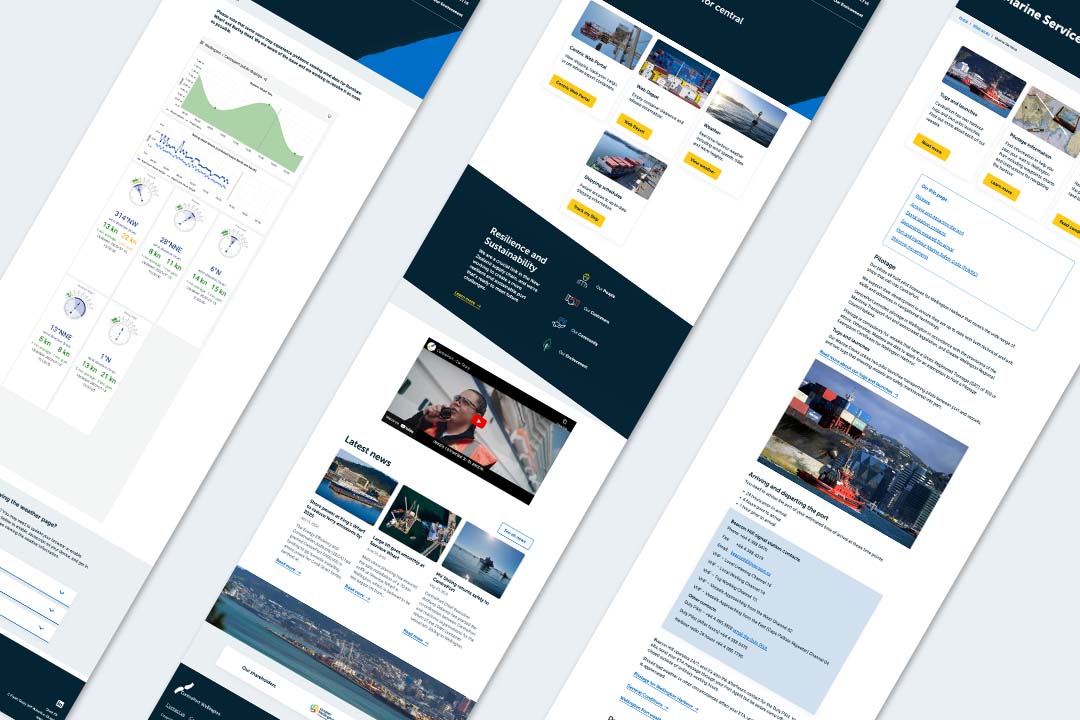Good project management is essential for successful website development and serves as the backbone of effective digital delivery. It begins long before any coding starts, with sales and onboarding setting the stage for collaboration, defining the scope, and aligning expectations.
Once the project kicks off, a well-structured approach to planning, design, development, testing, and launch helps ensure that teams remain coordinated and that client objectives are prioritised.
Whether you're creating a straightforward site or a sophisticated digital platform, implementing the right project management strategies minimises risks, maintains quality, and keeps your budget and timeline on track.
Planning Phase: Discovering and Defining the Project
The planning phase is vital for the success of any website development project.
During this stage, known as Discover and Define, the focus is on identifying core issues, clarifying requirements, and shaping a design solution.
This phase is particularly crucial for new clients or projects that require starting from scratch, like a complete website redesign. Key activities during this phase include:
- Onboarding and Kick-off Workshops: Introduce teams, set expectations, and establish a shared vision.
- Requirements Gathering: Interview stakeholders, analyse existing systems, and create initial documentation.
- Technical Discovery: Investigate constraints, platforms, and integration points to inform architecture decisions.
- Jira Backlog Preparation: Set up user stories and tasks, ready for sprint planning.
- Hosting Setup (if applicable): Prepare dev environments and access.
- Pattern Library Setup: Create foundational UI elements aligned with brand guidelines.
- UX Research (if needed): Conduct interviews, surveys, or usability audits to ensure user needs are understood.
The output of this phase is a clear roadmap for design and development - eliminating surprises and keeping everyone on the same page.
Design Phase: Prototyping with Purpose
Once the plan is set, managing the website development project transitions into the visual design and user experience phase. For more complex projects, a Design Sprint(external link) can be utilised to tackle business questions through quick prototyping and user testing.
This sprint-based approach allows for rapid iterations over a span of 3 to 5 days and involves:
- Mapping user journeys
- Sketching interface options
- Building interactive prototypes
- Conducting user tests
- Analysing results
Design decisions are rooted in user-centred thinking, aligning functionality with form to ensure clarity, usability, and brand impact.
Development Phase: Bringing the Vision to Life
Now the build begins.
Project managers play a crucial role here by coordinating resources, tracking progress, and keeping sprints on schedule.
Teams work from prioritised user stories in the Jira backlog, with tasks covering frontend development, backend integration, CMS configuration, and more.
Clear communication with the client continues throughout, with daily 15 minute check-ins (also known as daily standups), sprint demos, and status reports.
This ensures transparency and helps surface any blockers before they become issues.
Testing and Quality Assurance: Maintaining High Standards
No website should go live without rigorous testing.
In the project management process for website development, QA testing is a structured effort involving:
- Cross-device and cross-browser testing (desktop, mobile, and tablet)
- Functional testing against user stories and design specifications
- Bug tracking in Jira with clear reproduction steps and screenshots
- Regression testing as bugs are fixed
- Design and Client Sign-off
If issues block further testing, the story is moved to a ‘Blocked’ state until resolved.
Once testing is complete, the feature progresses to the final review stages.

Launch Phase: Preparing for Go-Live
As the project nears completion, attention turns to deployment.
Activities in the final sprint include:
- Handover to the support team
- Final documentation for key site functions
- Content population and review
- Domain and DNS setup
- Live migration planning and execution
- Client training (if needed)
A successful launch is not just about pushing a site live - it’s about doing so with confidence, documentation, and clear next steps in place.
Hosting and Support: Post-Launch Success
Post-launch, the project transitions to support and hosting.
Project management doesn’t stop here - it evolves into service management.
Support includes:
- SLA-based incident handling
- Ongoing improvements
- Security patching and performance monitoring
With Somar Digital’s managed hosting platform, teams can be assured of stability, scalability, and proactive care.
Project Management Tools for Website Development
Effective tools are essential to project success.
At Somar Digital, we rely on:
- Jira(external link): For agile sprint planning, backlog grooming, and task management
- Productive(external link): For time tracking, budgeting, and resourcing
- Figma(external link): For collaborative UI design and prototyping
- Slack(external link): For fast, informal team communication
Each tool supports a different aspect of the project lifecycle, making workflows more efficient and communication more consistent.

Common Methodologies for Website Project Management
Website development projects are typically managed using either Waterfall(external link) or Agile methodologies.
Waterfall: A linear, step-by-step process. Suitable for smaller projects with fixed scopes.
Agile: An iterative approach that encourages flexibility and collaboration.
At Somar Digital, we follow an Agile methodology with Scrum ceremonies, including:
- Backlog Grooming: Prepares work for upcoming sprints.
- Sprint Planning: Team selects stories to work on during the next sprint.
- Daily Stand-ups: Keep everyone informed of progress and blockers.
- Sprint Reviews: Demonstrate completed work.
- Sprint Retrospectives: Reflect and improve the process.
This process ensures adaptability, fast feedback loops, and shared accountability.
Conclusion
Project management in website development goes beyond just keeping tasks organised; it’s about achieving meaningful results. It provides clarity throughout the process, helps teams stay focused, and ensures that digital projects fulfill both business objectives and user needs.
By prioritising effective project management from the beginning, you significantly enhance your chances of delivering a successful website that is completed on time, within budget, and makes a real impact.
If you'd like to talk to us about your upcoming projects you can contact us here:




